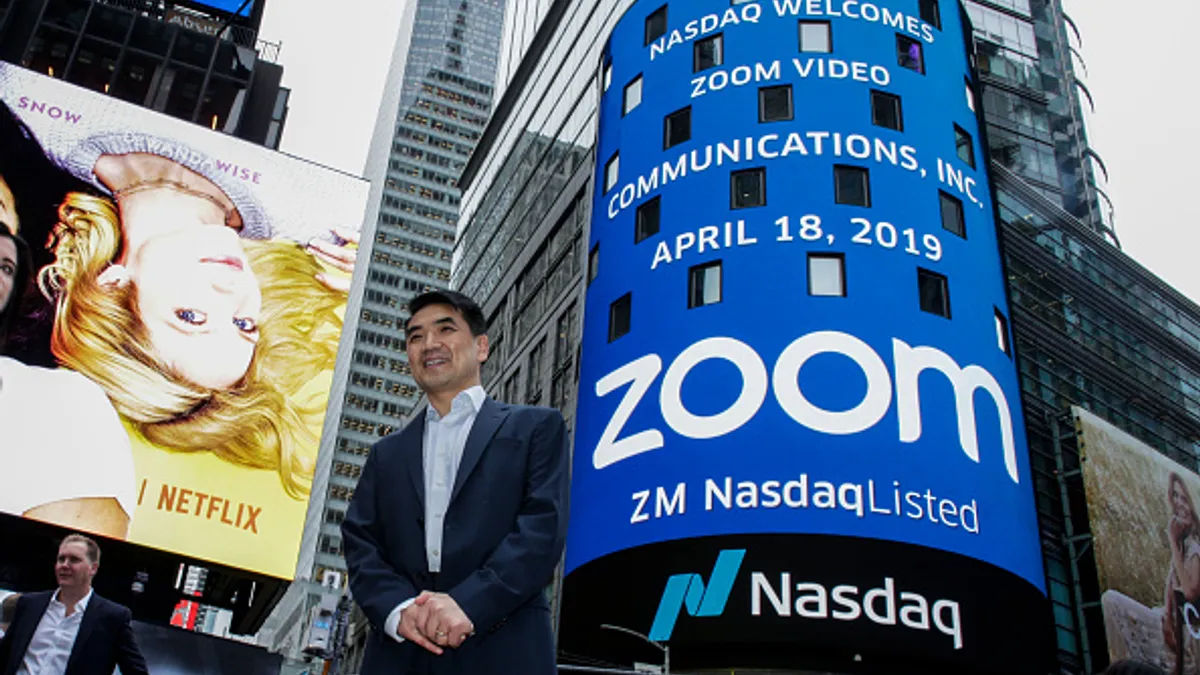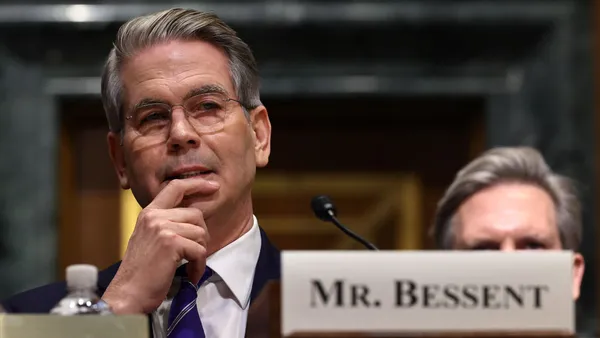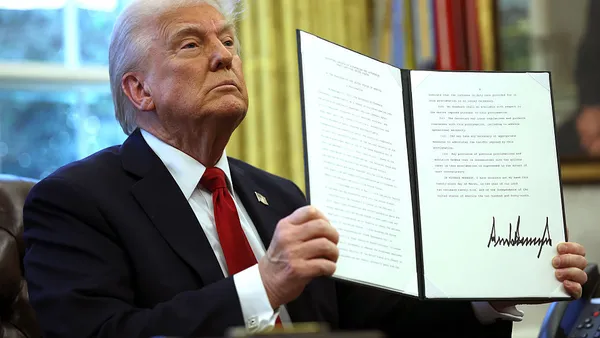Dive Brief:
- Continuing claims for jobless benefits rose more than expected, hitting the highest level since November 2021 as businesses trim hiring in the face of shifts in economic policy, including the biggest hike in tariffs in decades.
- Recurring applications for unemployment insurance increased to 1.9 million during the week ending March 22 from 1.8 million the prior week, the Labor Department reported Thursday.
- The high number of claims “provides further evidence that businesses are slowing hiring sharply amid heightened policy uncertainty,” Pantheon Macroeconomics Chief Economist Samuel Tombs said in a client note. “The risk ahead is that this gradual upward trend in unemployment gathers momentum as the pace of layoffs also begins to increase,” he said, predicting unemployment by the fourth quarter will rise to 4.5% from 4.1%.
Dive Insight:
President Donald Trump announced Wednesday a 10% baseline tariff on all imports and reciprocal tariffs ranging as high as 34% for China.
The turnabout from decades of free trade, and the apparent end to an era of globalization, triggered a plunge in stock prices and downward revisions to growth forecasts by several private sector economists.
The change in trade policy is “tremendously wide — sweeping really — marking a return to high tariff trade policies that we really haven't seen in nearly 100 years,” Evan Giesemann, a specialist on trade, tax and legislation at EY, said Thursday during a webcast.
“The volatility on tariff policy continues to effectively function as an uncertainty tax, which is preventing businesses from being able to make long term decisions,” he said. “Following the announcement yesterday, I do expect a level of volatility to persist on the trade and tariff policy landscape.”
The import duties announced this year, if not blunted, would undercut gross domestic product growth by 1 percentage point this year and by 0.4 percentage point in 2026, EY Chief Economist Gregory Daco said in a note.
Consumer prices would increase by 1 percentage point by Q4 and the median U.S. household would suffer an annual $690 loss in income, according to Daco.
“A significant adverse financial market reaction would exacerbate these shocks and push the U.S. economy into recession,” Daco said, adding that the murky outlook for tariffs will likely prompt “a wait-and-see approach from businesses and feed market volatility.”
In response to the tariff announcement, the Standard & Poor’s 500 Index fell 4.8% on Thursday and the Nasdaq plunged nearly 6%.
Federal Reserve Vice Chair Philip Jefferson, in a speech Thursday, did not express concern about the impact from import duties other than saying that “the prospect of tariffs has consumers and businesses reporting that they expect higher inflation in the near term.”
The economy and labor market are both “solid,” Jefferson said, while noting that “there could be some modest softening in the labor market this year.”
U.S. manufacturers cut employment in March in the face of weaker demand, slower deliveries and tariff-induced cost pressures, the Institute for Supply Management said Tuesday.
“Panelist companies continued to release workers,” Timothy Fiore, chairman of the ISM Manufacturing Business Survey Committee, said in a statement describing results of a survey. Companies “continued to cite ‘attriting down’ as the best process as opposed to layoffs,” he said.
Not all recent labor market data is negative. Initial jobless claims fell to 219,000 during the week through March 29 from 225,000 the prior week, the Labor Department said Thursday.
The Labor Department is scheduled on Friday to release data on unemployment and hiring during March.














